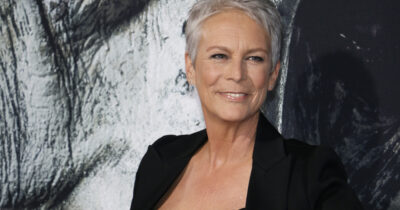
Imagine waking up one morning and finding the ocean rushing toward your neighborhood. According to scientists, that terrifying scenario isn’t just the stuff of movies — it’s a real possibility in three U.S. regions.
Researchers are sounding the alarm about a potential “mega tsunami” that could wipe out entire communities from Northern California to Washington State, with Alaska and Hawaii also at serious risk.
The threat? A massive earthquake along a sleeping giant known as the Cascadia subduction zone — and rising sea levels might make things even worse.
What is the Cascadia subduction zone?
Stretching from Northern Vancouver Island to Cape Mendocino, California, this fault line has the potential to unleash an enormous quake, triggering not only land collapse but a catastrophic wave event capable of swallowing entire towns.
A new study published in the Proceedings of the National Academy of Sciences breaks down the danger: researchers from Virginia Tech say a quake in this area could cause land to sink by up to 6½ feet, dramatically expanding coastal floodplains.
“The expansion of the coastal floodplain following a Cascadia subduction zone earthquake has not been previously quantified,” explained Tina Dura, lead author of the study and assistant professor at Virginia Tech.
“The impacts to land use could significantly increase the timeline to recovery.”
The scary part? There’s a 15% chance that this fault could unleash a magnitude 8.0 or greater earthquake within the next 50 years, experts say.
Why this could be devastating
When huge chunks of the Earth’s crust shift during an earthquake — or when a landslide or volcanic eruption occurs — the displaced ocean water can result in a mega tsunami. These waves are nothing like your typical beach swells. They can tower hundreds of feet high and move at terrifying speeds, wiping out everything in their path.
In the Pacific Northwest, it’s not just the shaking that’s concerning — it’s the aftershocks, land sinking, and the possibility of massive waves crashing inland.

“Cascadia is a unique place. It’s not super heavily populated, but most estuaries have a community in them, and they’re all right in the zone of subsidence,” Dura added.
“This is honestly where I think the subsidence could have bigger impacts than it has during other recent large earthquakes around the world.”
Alaska and Hawaii in the danger zone too
Alaska, already known for its frequent quakes and rugged terrain, is increasingly vulnerable as glaciers melt, loosening rocks and making landslides more likely, according to the Daily Mail.
Hawaii, on the other hand, has a dark history with mega tsunamis caused by collapsing volcanoes. Scientists say about 105,000 years ago, a 1,000-foot wave slammed into the island of Lanai after a massive chunk of land broke off.

And the threat hasn’t gone away.
Mauna Loa and Kilauea, two of Hawaii’s most active volcanoes, continue to reshape the islands with flowing lava and unstable terrain. Kilauea was actively erupting as recently as May 16, reminding everyone that the island’s volcanic underbelly is very much alive.
The ring of fire is heating up
All of this is part of what geologists call the “Ring of Fire” — a massive zone around the Pacific Ocean where tectonic plates collide, triggering the world’s strongest earthquakes and most explosive volcanic eruptions.
The last time the Cascadia subduction zone really let loose? January 26, 1700. That means the region is long overdue for another major seismic event.
What can you do?
While you can’t stop a tsunami, you can prepare. Know your local evacuation routes, stay informed on emergency alerts, and talk with your family about what to do if disaster strikes. Experts may not know exactly when the next big quake will hit — but they’re confident it’s a matter of when, not if.
If you live anywhere near the West Coast, this isn’t fear-mongering — it’s a wake-up call.
READ MORE
- Texas woman’s chilling final text before house washed away
- Donald Trump dementia fears spike as doctor makes new dire claims




